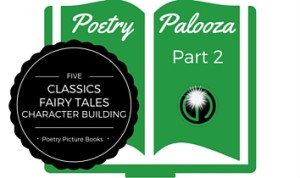
Welcome to part 2 of our Poetry Palooza! Throughout this month of April, we want to share with you some of our favorite poetry books (there are SO many good ones!) and some practical strategies for sharing poetry with your class that have been classroom tested and student approved!
Just joining us? Check out Part 1: Five Science and Nature Poetry Picture Books.
Poetry is the revelation of a feeling that the poet believes to be interior and personal which the reader recognizes as his own.
~Salvatore Quasimodo
This week’s category seems a bit broad, but the books we chose to share with you in this post have strong poems with rich vocabulary that will build your students as individuals as well as readers. So often, we see allusions to fairy tales and works by authors considered “classic” in the books we read and the movies we watch. However, students don’t always have the background knowledge of these texts to be able to understand the allusions and we don’t always have time to cover the necessary texts. Exposure to fairy tales and classics, even at an early age, will help students build schema. Another thing typically missing from our curriculum due to time constraints is character building, learning how to be productive, respectful members of society. We can “sneak” some character-building into our day by reading poems about strong, admirable people and learning about their qualities and traits by studying rich vocabulary words. Poetry is so versatile!
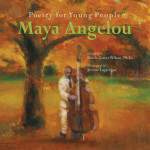 Poetry for Young People Series:
Poetry for Young People Series:
Love, love, love! I first came across this series two years ago when I searched for one of my favorite poets, Maya Angelou, and Amazon delivered this beauty! I suppose that I was once in the teacher camp that felt it was inappropriate to teach young elementary students “the classics.” Before you start sending hate mail, I have been reformed thanks to this series. In this series, Emily Dickinson, Robert Frost, Langston Hughs, Walt Whitman, Edgar Allen Poe, and others have a collection of their poems (unedited) accompanied by beautiful pictures. The pictures help the reader digest the poem and get their mind thinking about the rich words of the poetry. The poems are complex, especially for the younger students, so this is a great time to deploy close reading strategies. Take a poem and read it through, reread and look for vocabulary, reread a third time for another skill conducive to the poem. Now even the youngest student can be exposed to classics and learn to appreciate poetry from a young age!
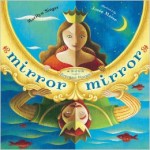 Mirror Mirror by Marilyn Singer:
Mirror Mirror by Marilyn Singer:
I have held on to this book for a few years now and I am still amazed. This brilliant book is written so that you can enjoy each poem two ways. First you read each poem forward and then in reverse. The best part – the second reading will completely change the point of view! Each poem is about a famous fairy tale. One example is a poem told from the point of view of Little Red Riding Hood. When you read the poem in reverse, exactly as written, it is transformed into the point of view of the Wolf! It’s remarkable. I would add this poetry book to a fractured fairy tale unit so that students could compare and contrast point of view. Singer has released two more books, and while I haven’t seen them yet, they’re on my (ridiculously long!) wishlist: Follow, Follow and Echo, Echo.
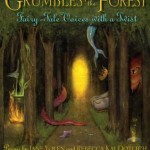 Grumbles from the Forest: Fairy-Tale Voices with a Twist by Jane Yolen and Rebecca Kai Dotlich:
Grumbles from the Forest: Fairy-Tale Voices with a Twist by Jane Yolen and Rebecca Kai Dotlich:
This book is set up similarly to Mirror, Mirror. While the poems are not told in reverse, there are two poems per page providing different points of view from a classic fairy tale. For example, the page for The Princess and the Pea includes a poem from the princess’s point of view, as well as from that of the pea. While Mirror, Mirror will entice readers with the remarkable styling of reverse poems, this book will dig a little deeper into characterization: how are the characters feeling, why they did what they did, and what is important to them. Use this book along with your fairy tale unit, to help students see different perspectives and discuss character. Make sure students think about character motivations, feelings, and actions. This is a great time to introduce higher level vocabulary (one or two words a day, such as ambitious and determined), that students will use repetitively throughout the unit.
Nothing seems more important right now in education for our kids than showing them how to be tolerant, kind, loving people. It’s not necessarily one of our standards, but probably the true reason we went in to education, and constitutes one of our “other duties as assigned”. The original poems in this beautifully illustrated picture book are all about paying it forward or doing something nice for others such as, giving up a seat on the bus, donating hair, helping to build homes, etc. I feel as though every classroom should have this book to help inspire students. Once reading some of the poems, discuss what is happening. Students will have to draw on their schema, make connections, and inferences in order to fully understand each poem. Discussion will help scaffold this for the students. Once the poem has been discussed and analyzed, ask students what they can do. Begin a list of different ways the students can practice an act of kindness. Choose one act for the whole class to participate in for one week. This could be, opening doors for others, praising others, etc.) Each day, provide time for the students to discuss how they worked towards this act of kindness! It’s the whole, “Be Kind To Each Other” – Ellen thing.
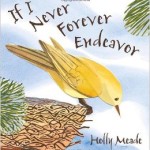 If I Never Forever Endeavor by Holly Meade:
If I Never Forever Endeavor by Holly Meade:
There is so much buzz in my personal learning network (PLN) about a growth mindset. We want our students to try new things, and to not be afraid of mistakes but rather learn from them. This poetry picture book will begin that discussion in your classroom. The poor little bird is afraid to fly, but what would happen if he never tried? Not only is the message powerful on it’s own, but the poem is beautifully written, the pictures are engaging, and the vocabulary is enriching. Take some of the words and spend time teaching and discussing them with your students, even the youngest student deserves the power of language.
What poetry picture books would you add?

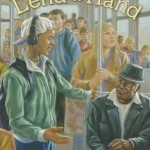





I am also trying to get my kids thinking about growth mindset and what it can mean for their learning. I am very excited that your site links certain books and titles (along with tying in poetry and helping link the concepts we need to teach). I will LIVE here on this page this year. Thanks for this and thanks for an awesome training today!!
Thank you! We look forward to more comments on how the books are working for you this year!
I LOVE all the poetry resources you are sharing with us! You Rock!
Thanks for all these great ideas! I recommend Shel Silverstein. He is so creative!
Yes! I completely agree, I love Shel Silverstein. I remember having to memorize “Ickle Me, Pickle Me, Tickle Me Too in school”.